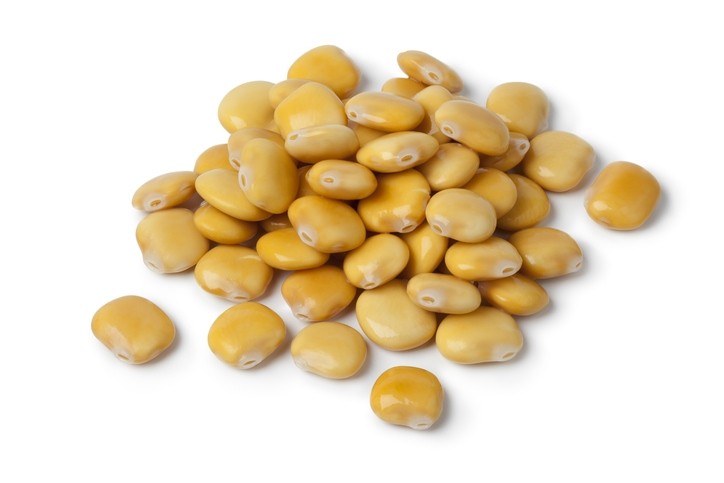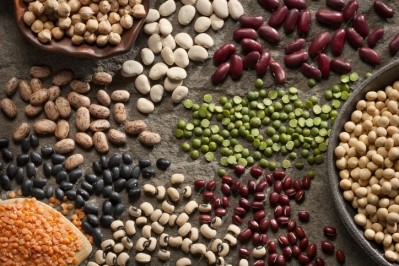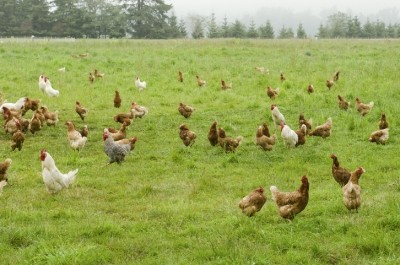UK-grown lupins can replace soy in broiler diets but at a cost

“If we include lupins in broiler diets the feed price does increase. Dehulling the lupins would improve the protein level by removing the significantly higher levels of fiber. This would add value to the lupins but would also increase the cost. This really demonstrates the challenges novel, or more precisely, alternative proteins face and there needs to be a wider commitment from the whole supply chain to establish and ensure consistent supply,” said Brian Kenyon, ABN senior nutrition manager.
He was presenting on whether lupins are a viable protein source for birds at last month’s poultry research seminar run by the UK’s National Farmer Union (NFU).
The hunt is on for domestically grown protein crops, he stressed.
“The UK imports in excess of 3m tons of soy every year – 1mt of beans and 2mt of meal. There are many questions about the impact this reliance on soy is having on the environment and whether this continued use is sustainable."
He said there are also potential risks in the current supply chain both in terms of physical supply and price arising out of this dependency. "We have seen soy exceed £420 per ton this year and all of us poultry producers have seen the real impact that has had on our finished feed price. Therefore, there has been an ongoing search for a UK produced protein crop suitable for monogastrics. Historically, this has been predominantly rapeseed, which is a really good source of protein for poultry but recent challenges for rapeseed growers in the UK have made supply unpredictable and expensive,” said Kenyon.
Sweet lupins have been grown in Australia. More recently, the Polish government supported the growing of lupins in that market, and, while that support has actually been removed now and the production has dropped off, for a number of years there was significant acreage put down for lupin production in Poland, he noted.
Whole lupins have a protein content of between 28% and 34% crude protein, subject to variety and growing conditions. This is higher than field beans but lower than soybean meal (46%). Lupins also have a higher fiber content of 10-12% which may bring benefits in layer diets, outlined Kenyon.
Unfortunately, lupins contain alkaloids, bitter tasting compounds that can cause feed rejection in animals. This has historically limited their use in animal feeds. “But modern sweet varieties are significantly lower in these alkaloids although growing conditions can influence the level of those compounds in the final crop,” said the ABN nutrition specialist.
Commercial broiler trials
ABN got involved in assessment of the potential of UK grown lupins as protein alternatives after being approached by Frontier Agriculture, who were using lupins in a small number of trials in Kent as an alternative break crop to rapeseed, testing both blue and white lupin varieties.
ABN decided to evaluate the benefits of UK produced lupins for poultry diets in commercial scale trials, said Kenyon.
The first step was to confirm its raw material matrix. “We had historic values and recent numbers published from Poland. But the real impact from local growing conditions couldn’t be ignored so we had to wait until the UK crop was harvested before we could complete full nutrient testing and finalizing of our matrix. A key [part of the] analysis for us was the alkaloid level, which was low, at around 400mg/kg, and well within the European Food Safety Authority (EFSA) published range.”
Once the raw material matrix was established, the ABN team set out its commercial scale broiler trials in 2020, using an independent grower in North Yorkshire. The site consists of six standard broiler houses, each placing 43,500 birds.
The trial design was very simple, said Kenyon. In trial one, they fed lupin containing diets to four houses and used two houses as a control, while the second trial used only two houses for the lupin trial and four houses were used as the control. In terms of measurements, the team looked at normal live performance KPIs - live weight, FCR, and mortality – as well as litter condition, foot pads and hock scores.
Lupins were included at up to 7.5% of the diet.
“The diet design was formulated with minimum levels of lupins – we increased the level of lupins as we progressed through the program. It was a lot easier to put higher levels into the later [finisher] diets than it was into the first starter feeds.”
The results showed no difference in life performance, when corrected to 39 days, no welfare issues and no reports from the farm regarding problems with palatability.
“If we take the average lupin performance and apply it to the whole farm of 261,000 birds, this would reduce soy usage by this crop of birds by 29 tons or 2.8% reduction in dietary soy level, which, with the average dietary soy level dropping from 21.4% down to 18.6%, this is not insignificant change,” said Kenyon.
The ABN team, along with various business units in AB Agri, are continuing to investigate alternative feed proteins, he added.












